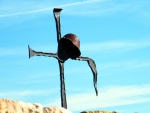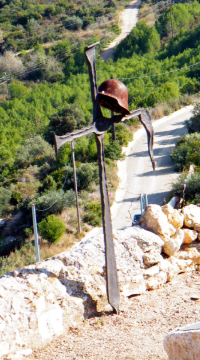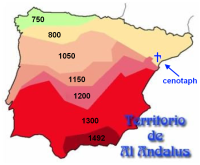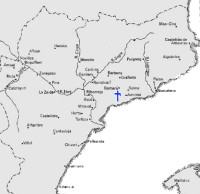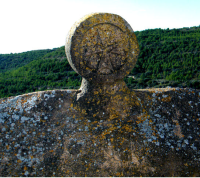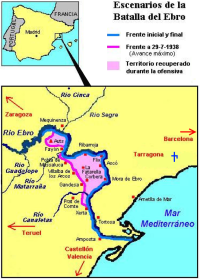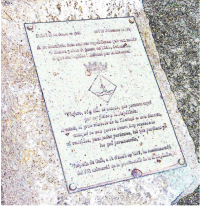Hooked cross
(Puzzle 024)
Memorial
This hooked cross was found at a cemetery about 100 km west of Barcelona, Catalonia.
It is not marking an actual soldier's grave; rather it is a cenotaph in honour of Republican soldiers who fought and died protecting the village from Franco's advancing army in the late 1930s.
The meaning of the Cross is well understood, but what could be the significance of the angled right arm?
The location of the cemetery gives a hint, in that its church, Església de Sant Miquel, was part of an XI century Romanic castle and it is thought that Templar knights had fortresses in the area.
Throughout this area's history there have been major battles; the most recent being during the civil war (1936-1939). The area was Republican until the end of the war in the early part of 1939 and this cenotaph is in honour of soldiers from the village who died in the 'last big battle' of Spanish Civil War.
Not an isolated incident
We are fortunate to have had the assistance of a local historian who sent the following information:
People settled in the area at least 6,000 years ago.
From the IX century, Arabic Muslims controlled Spain just to the south of this area for hundreds of years until XIV century. Eventually the Christians fighters pushed the Muslims south (see Map I), but not before several fierce battles had been waged.
Much of the advance was led by Templar knights, who had built fortresses and castles in the area, as shown on Map II. The lack of documentary evidence of their presence is compensated by signs such as this Templar Cross carving that may be the remains of a tombstone.
The next few hundred years saw Spain scramble to take advantage of newly discovered regions around the world. This irked Spain's neighbours, which led to wars involving France, Britain and Portugal. The turmoil culminated in an economic crisis for Spain in the 19th century and an undermining of the monarchy.
And this brings us to the last major war for the country; the Civil War of 1936-39.
As Franco's nationalists moved into this area to mop up the remnants of the democratically elected republic, the final battles were fought around where this cenotaph now stands. Many Nationalists and Republicans lost their lives and even today, especially in the in the mountains, it is not difficult to find human bones of fallen soldiers who had nobody to bury them.
In the village today is a church with its graveyard, and the remnants of a castle which have survived the battles.
Next to the cenotaph is a plaque with an inscription that translates as:
To the memory of the Republican soldiers of our village who died in January 1939, defending the lawful government and fighting for freedom.
And our reason for skimming through this history? That curious hook on the cenotaph.
The hook
The hook is similar to the "nut", the angled part of the stock of an Admiralty Pattern anchor, commonly seen in this coastal area. However, nuts are usually rounded, not pointed.
As mentioned above, this location has a sorry history of fierce fighting and it is not surprising that a sword is included in the coat of arms of the local municipality.
This jagged-edged sword is not dissimilar to the pointed dangling arm on the cenotaph, so there was speculation that this might represent a sword. As is customary with a Battlefield Cross, the weapon is pointing downwards.
It could just as easily have been a symbol used by the Nationalists, or the Republicans. Perhaps the artisan who fashioned the cross had in mind a particular piece of military hardware, like the jutte. Perhaps not.
Then finally, Alex Roman pointed out the answer. Yes indeed, there is a fighting association but the point is not of a weapon, rather it is the jagged remains of a banner. See gonfalone.
